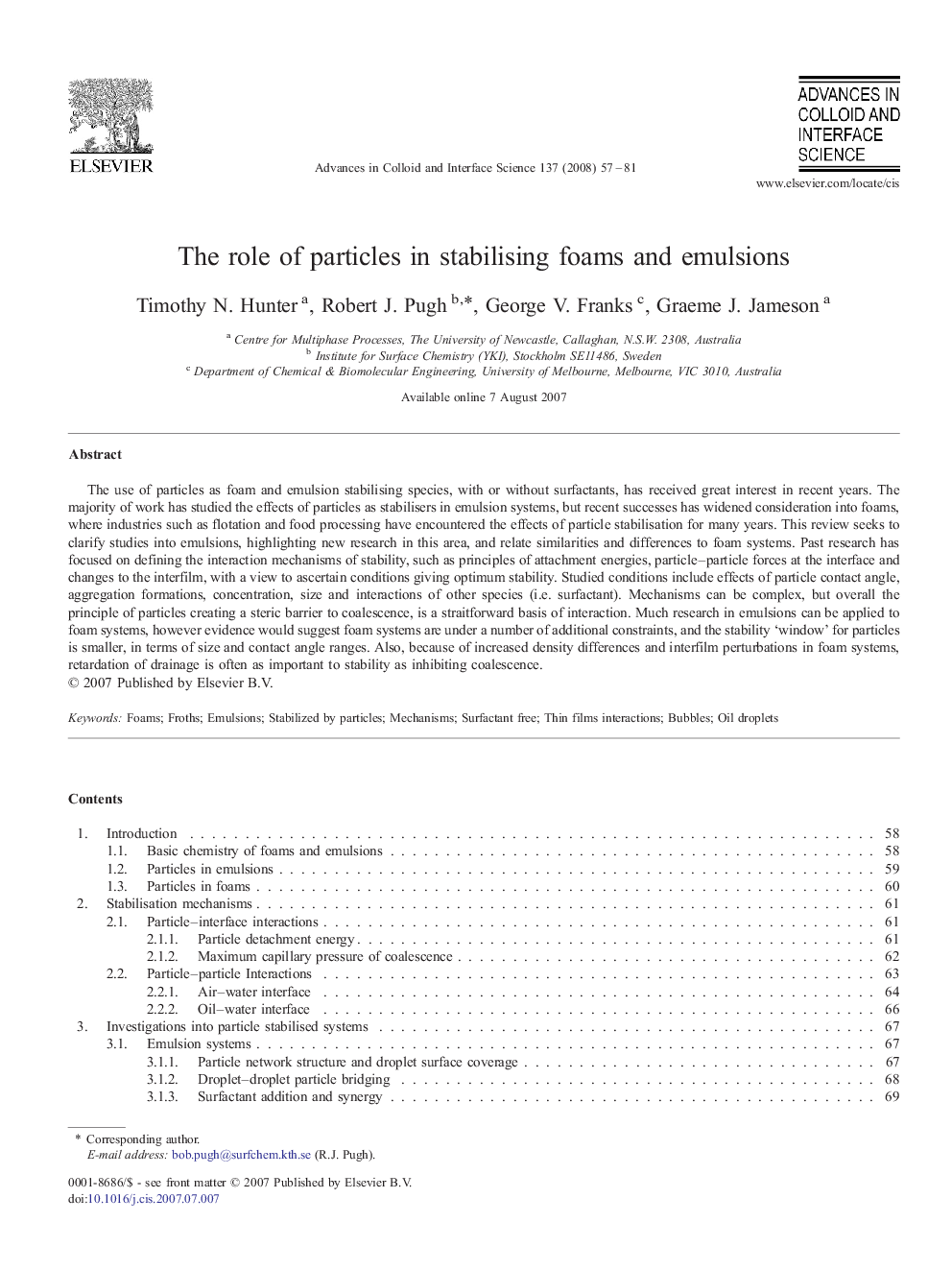| Article ID | Journal | Published Year | Pages | File Type |
|---|---|---|---|---|
| 591186 | Advances in Colloid and Interface Science | 2008 | 25 Pages |
The use of particles as foam and emulsion stabilising species, with or without surfactants, has received great interest in recent years. The majority of work has studied the effects of particles as stabilisers in emulsion systems, but recent successes has widened consideration into foams, where industries such as flotation and food processing have encountered the effects of particle stabilisation for many years. This review seeks to clarify studies into emulsions, highlighting new research in this area, and relate similarities and differences to foam systems. Past research has focused on defining the interaction mechanisms of stability, such as principles of attachment energies, particle–particle forces at the interface and changes to the interfilm, with a view to ascertain conditions giving optimum stability. Studied conditions include effects of particle contact angle, aggregation formations, concentration, size and interactions of other species (i.e. surfactant). Mechanisms can be complex, but overall the principle of particles creating a steric barrier to coalescence, is a straitforward basis of interaction. Much research in emulsions can be applied to foam systems, however evidence would suggest foam systems are under a number of additional constraints, and the stability ‘window’ for particles is smaller, in terms of size and contact angle ranges. Also, because of increased density differences and interfilm perturbations in foam systems, retardation of drainage is often as important to stability as inhibiting coalescence.
